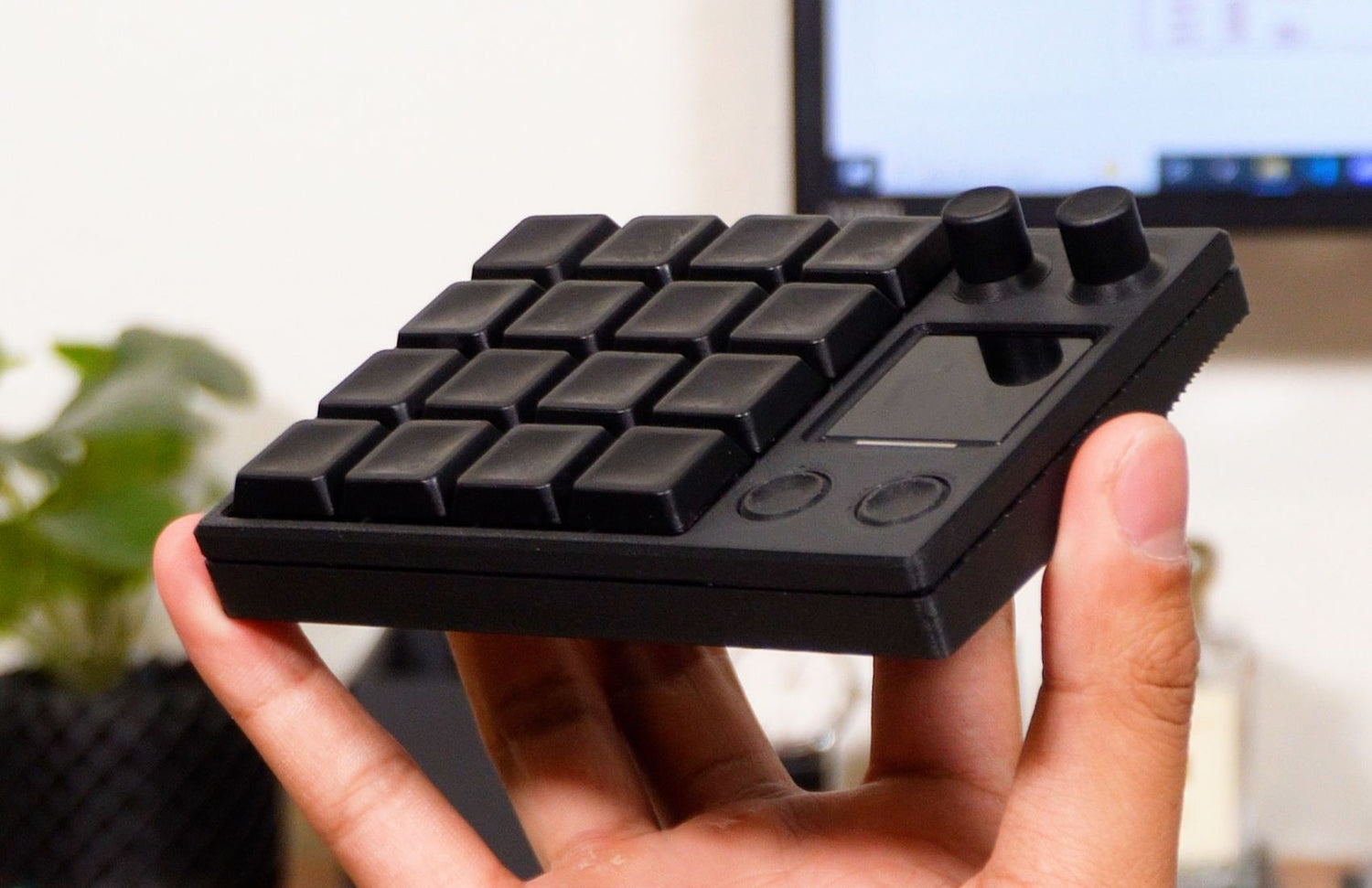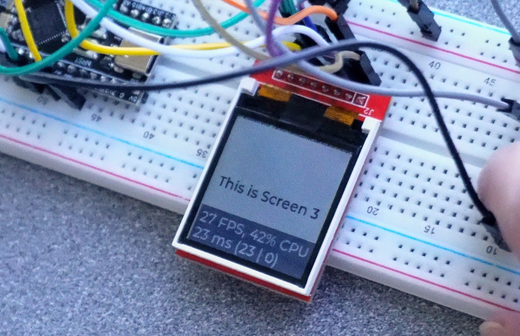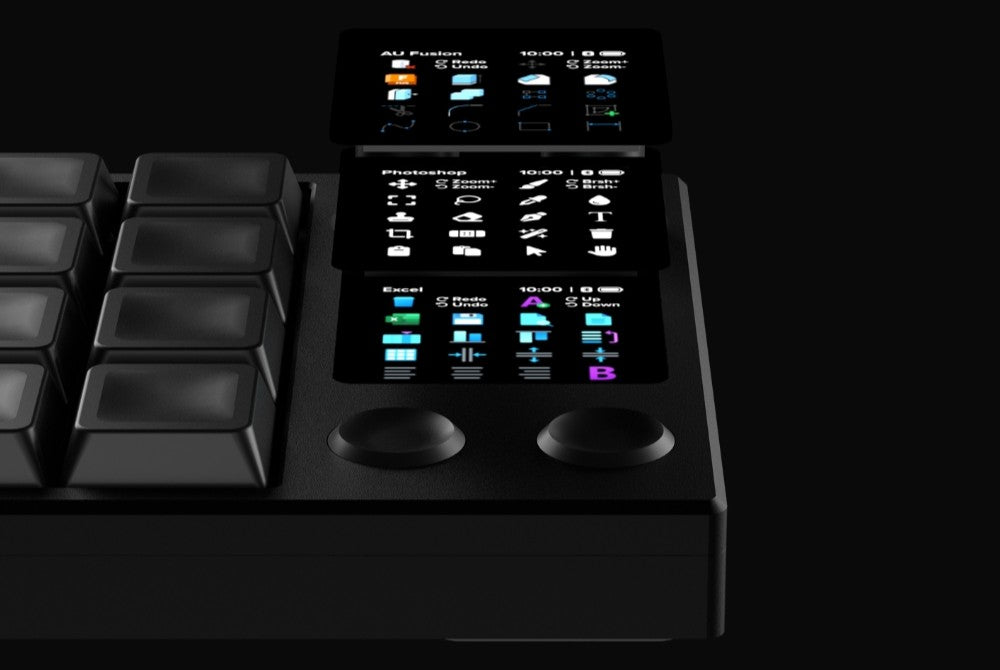Overview
-
Compared different LCDs to evaluate their fit for Glyf's display
-
Created the first case for Glyf's second design iteration
-
Switched to low-profile switches and custom keycaps for a slimmer design
Welcome Back To Our Story!
In our first update, you were introduced to the first working prototype of Glyf. It featured a 120x120 LCD. From there, we were ready to add tempered glass to it and give it a fresh clean look like other products you have seen before. 
I reached out to a manufacturer to acquire samples with tempered glass so that we can achieve a cleaner look when Glyf is finalized and to protect the screen from scratches. I sent in files that looked like this to get a screen that looks like the one below:

There was only one slight problem… While doing screen tests for visibility, we found out that the resolution of the screen was too low to visually achieve the features and look that we were going for. When trying to display any text, it was hard to read, and trying to display any images was too pixelated. After doing a bit of research, we found a manufacturer that could make a 240x240 LCD display that would fit perfectly with our design! 
But before we could be sure, we tested with another 240x240 LCD from Amazon to see what these things were capable of:
As you can see, the 240x240 LCD can display very clear images and small texts that are legibe from a short distance. It was finally time to design a case for the entire thing to lock down the form factor.
Big and Bulky
Now that we had the exact size of the screen, I could finally create a case with the correct spacing for everything. 
The case design and layout of the keys/rotary encoders allowed me to measure the exact dimensions internally and create a PCB based on those numbers. This prototype PCB was also designed around the original keycaps we used for the Printed Pad and featured Alps Alpine rotary encoders—some of the best-feeling encoders. 
Putting it all together, here’s what the final revision of this prototype looked like!
Although… something feels off. It’s a bit bulkier in person than how I saw it on the computer.
Surely, there’s something we can do to make it slimmer.🤔
Get Low!
Welcome to the new age of low-profile switches. Choc switches walked so that Kailh low-profile switches could run! Fully made of POM, available in clicky, tactile, and linear options, and sounding great—these are the perfect switches for this device. (POM is the infamous material used in many other keyboard switches that's popular for feeling and sounding amazing)



Designing a new case around the Kailh low-profile switches, here’s the slimmer design:
But something still feels off… 🤔 Ahhh, that’s it! We should design low-profile keycaps to match the switches and give the case a slimmer look 🦾. But what should they look like, and more importantly, what should they feel like? After many iterations, here’s what we landed on:
Very, very pretty 🤤. Now, to figure out what they feel like, let’s resin print them and physically test them out:
Annnnnd voilà! Here’s what the most recent design looks like:
At this point, Noah had no idea what this prototype looked like—I had to show him.
Whats Next?
From here, there’s still a lot to do—like redesigning the inside geometry in SolidWorks to be easily machined out of aluminum and fixing weird dimensioning bugs like this one from Fusion 360🤮 (The edge-to-edge dimension is a number with a multiple decimal places which would be very hard to physically make/manufacture)

Personally, I’m in love with the new design. I stuck the keycaps on a functioning prototype and have been testing them myself in Premiere Pro to edit videos. I’m really enjoying the workflow using it, and hope others will feel the same when they get their hands on one!
Thanks for reading this update to the end. Did you catch any Easter eggs? Stick around to see more of Glyf!
∼ Ben




1 comment
Alex Wendt-Jensen
i love this new product you guys have in testing i would love to vuy one aswell but i have a qustion will a glyf 2.0 (i know you guys are busying working on the glyf) so for glyf 2.0 will it have rgb or something for gamers or like just rgb white?
Leave a comment
This site is protected by hCaptcha and the hCaptcha Privacy Policy and Terms of Service apply.